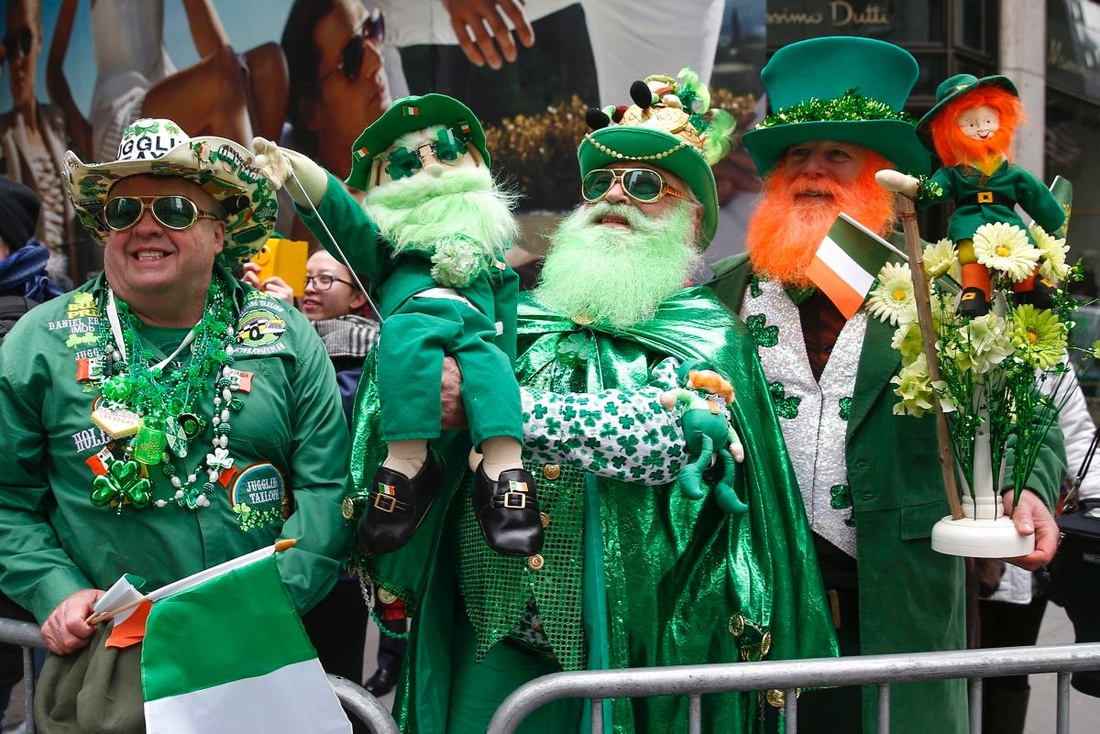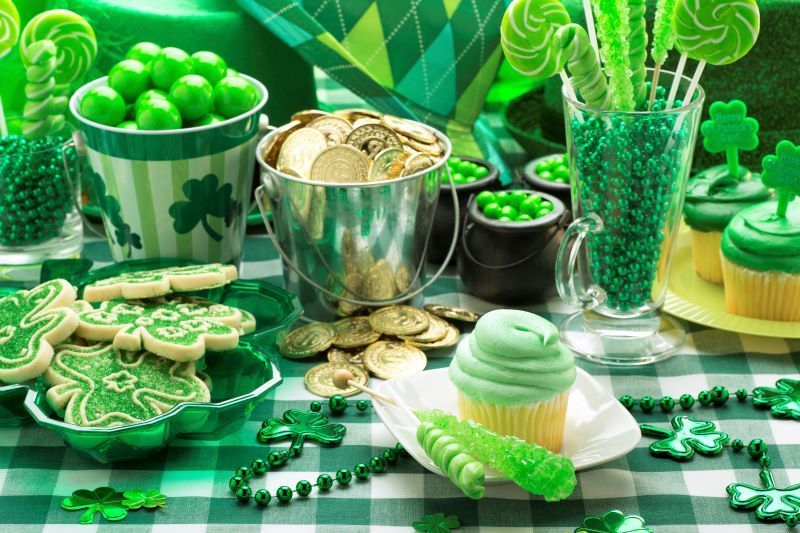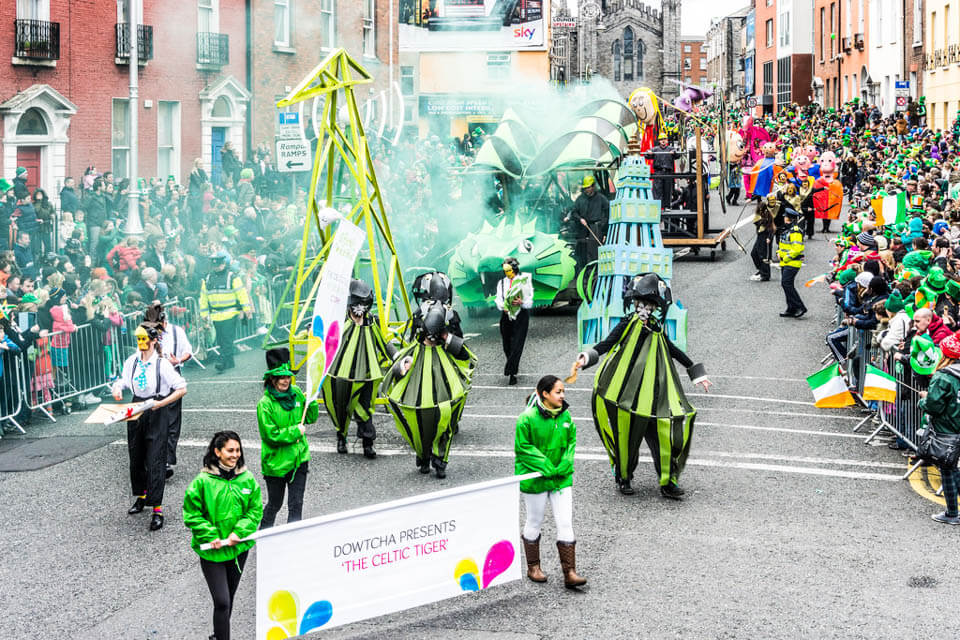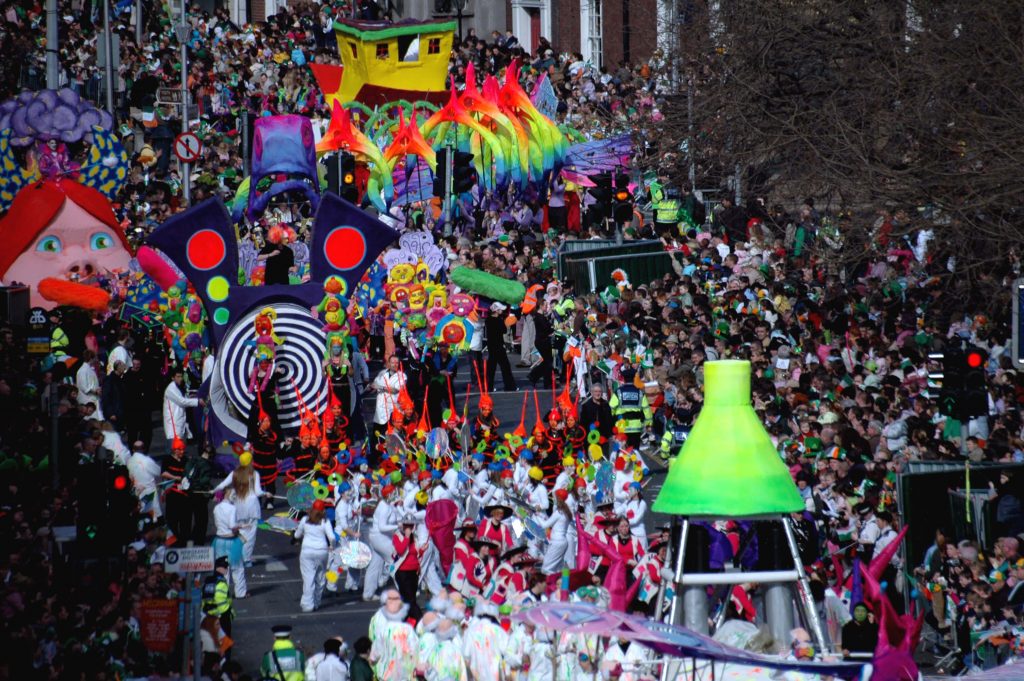Gallery
Photos from events, contest for the best costume, videos from master classes.
 |  |
 |  |
 |  |
 |  |
 |  |
 |  |
Photo: Tourism Ireland. Many people may start their day off with a traditional Irish breakfast of sausages, Irish rashers, eggs, black and white puddings together with traditional Irish soda bread, one of the Saint Patrick's Day traditions in Ireland. The traditional corned beef and cabbage, which is popular in the United States on St. Patrick The tradition of St Patrick’s Day parades began in America, before the founding of the United States. A Spanish colony in what is now St Augustine, in Florida, held the first recorded parade on Saint Patrick’s Day Parade in Dublin Pub Sessions & Céilís. It can be argued that the most common St Patrick’s day traditions in Ireland are pub sessions and other pub activities! It is undoubtedly the busiest day for pubs in Ireland with most pubs having some kind of entertainment, from traditional music sessions to Céilí dances. Groundhog Day is behind us. Easter is around the corner. And in the middle is a holiday associated with merry drinking and a centuries-old religious figure: St. Patrick's Day. Monday, March 17, is Key Traditions of St. Patrick’s Day 1. Wearing Green and Shamrock Symbolism. One of the most recognizable customs is wearing green. The color green is symbolic of Ireland’s lush landscape, and it’s also associated with the shamrock—a three-leaf plant that St. Patrick is said to have used to explain the Holy Trinity. LESSON DESCRIPTION. St. Patrick’s Day: History, Legends, and Global Traditions is a 45-minute ESL lesson designed for intermediate-level students (B1-B2). This engaging curriculum combines language learning with cultural exploration, introducing students to the history and global traditions of St. Patrick’s Day. In Ireland St Patrick’s Day wasn’t declared a public holiday until 1904. Today it’s celebrated with parades, festivals, and religious services. Many towns also hold traditional music and dance performances. Others host festivals celebrating Irish culinary favorites like Irish soda bread, Irish bacon and Guinness. St Patrick’s Day Traditions One of the more common St. Patrick’s Day traditions in Ireland and elsewhere is the wearing of green. Now, wearing green on St. Patrick’s Day doesn’t have to mean lashing on face paint and dyeing your hair green – a green tie or a green pair of socks will do the job just fine! Though St. Patrick’s Day was officially placed on the Christian calendar in the early 1600s, the Irish people had been paying homage to their beloved saint in more localised and informal ways for hundreds of years. Original traditions of St. Patrick’s Day were deeply rooted in religious and national identity. ~ With Saint Patrick’s Day fast approaching, we take a look at the History & Traditions of St. Patrick’s Day ~ St. Patrick’s Day, celebrated annually on March 17th, honors St. Patrick, the patron saint of Ireland. According to legend, St. Patrick used the shamrock to explain the concept of the Holy Trinity, making it a lasting symbol of Irish heritage. Today, people around the world dress in green to partake in the spirit of the holiday. 2. St. Patrick’s Day Parades. The tradition of St. Patrick’s Day parades began not in Ireland, but in New York How do you say “Happy St Patrick’s Day” in Irish? St Patrick’s Day falls during Seachtain na Gaeilge, the biggest Irish language festival in the world, celebrating Gaeilge through music, culture and community events. To wish someone a happy St Patrick’s Day in Irish, or as Gaeilge, say: “Lá fhéile Pádraig sona dhuit!” The Best Places for St Patrick’s Day Pictures. Dublin turns into a photographer’s dream on St Patrick’s Day. But if you only take pictures on O’Connell Street, you’re missing out on some of the best spots. Dame Lane – This hidden alley is full of colorful street art that makes for a perfect St Patrick’s Day pictures backdrop. Plus St. Patrick’s Day, celebrated on March 17 each year, is known for its parades, shamrocks, and a whole lot of green. It’s a day when people around the world embrace Irish culture — whether they have Irish heritage or not. But behind all the revelry, St. Patrick’s Day has a deep and fascinating history that goes far beyond the modern celebrations. Some of the traditions we associate with From Shamrocks to Parades: The Spread of St. Patrick’s Day Traditions Globally. St. Patrick’s Day, celebrated annually on March 17th, is a cultural and religious holiday that originated in Ireland but has since spread across the globe. The day commemorates St. Patrick, the patron saint of Ireland, and the arrival of Christianity in the country. Saint Patrick’s Day, celebrated every March 17th, is a festivity rich in folklore, legend, and tradition. This day, dedicated to the patron saint of Ireland, intertwines the historical with the mythical, offering a glimpse into the soul of the Irish people. St. Patrick’s Day on March 17th is Ireland’s most significant cultural celebration, a national holiday marked by events, traditions, and nationwide tributes to Ireland’s patron saint. There’s no simple answer to “Do they celebrate St. Patrick’s Day in Ireland?”—it all depends on the household. St. Patrick’s Day holds deep cultural meaning both in Ireland and across the globe. This celebration brings people together through traditions, music, parades, and the vibrant spirit of Irish heritage. In Ireland. In Ireland, St. Patrick’s Day is a public holiday that honors the patron saint of the country. Saint Patrick’s Day Traditions in Ireland. In less-visited areas of Ireland, Saint Patrick’s Day is a quieter, more family-oriented holiday than the raucous celebrations that may occur in other areas of the world. Saint Patrick’s Day is a public holiday in Ireland, meaning that banks and Credit: Flickr / New York National Guard. Today, St Patrick’s Day is a public holiday in Ireland and is a mostly secular celebration. With it being a religious holiday honouring a saint, many people like to attend religious services, such as the special mass held on this occasion.
Articles and news, personal stories, interviews with experts.
Photos from events, contest for the best costume, videos from master classes.
 |  |
 |  |
 |  |
 |  |
 |  |
 |  |